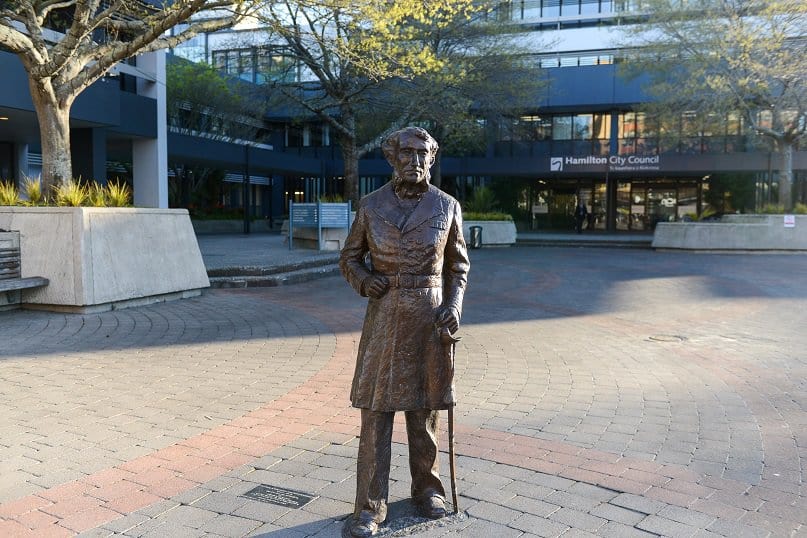As an international groundswell of opinion grows against statues perceived to be associated with racism or oppression, the city of Hamilton in New Zealand has removed the statue of the man for which it is named.
This follows requests from Maori members of the community that it be removed due to the offense it causes. There was also a threat by one Maori tribal elder to “tear down the statue” himself.
Captain John Hamilton accused of killing Maoris
The statue is of Captain John Hamilton, a British officer who is accused of killing indigenous Maori people. He himself was killed in the Gate Pa battle in the city of Tauranga in 1804. The battle was a remarkable Maori victory achieved against tremendous odds.
What is today called Hamilton was originally known as Kirikiriroa by Maori. In the 1860s, it was renamed after Hamilton.
The statue was gifted to the city in 2013. The Waikato-Tainui tribe, or iwi, formally requested on Thursday, 11 June that it be removed.
Statue was contentious for many community members
Hamilton’s Chief Executive, Richard Briggs, said it had become clear the statue was likely to be vandalised.
“We know this statue is contentious for a number of our community members. It is the right thing for the council to take the opportunity to look at the long-term plan for this artwork and determine where and how it might fit in to the city’s future.”
“We also have public safety concerns,” Briggs stated. “The statue is firmly embedded into Civic Square and sits on top of the Garden Place underground carpark. If the statue were to be forcefully removed from its current position, as has been indicated, it could severely undermine the integrity of the building below it.”
The statue was subsequently removed by workmen.
Removal will be the start of a wider discussion
Briggs says the removal of the statue would be the start of wider discussions with key city stakeholders. It was not about erasing history, but instead understanding the wider context behind it.
“We have been working collaboratively with Waikato-Tainui for more than 12 months on a project to review culturally sensitive place names and sites. We understand this work is vitally important in raising awareness to cultural harm which has taken place,” Briggs stated.












